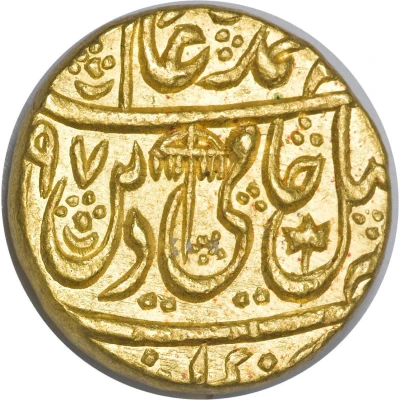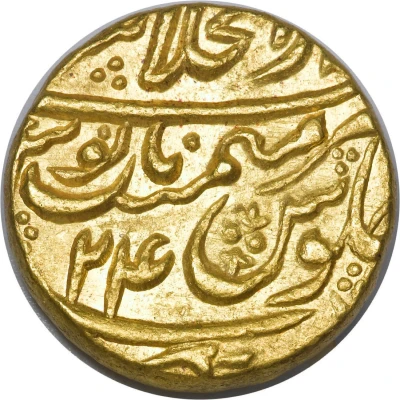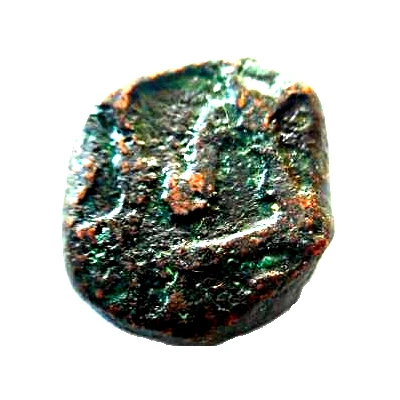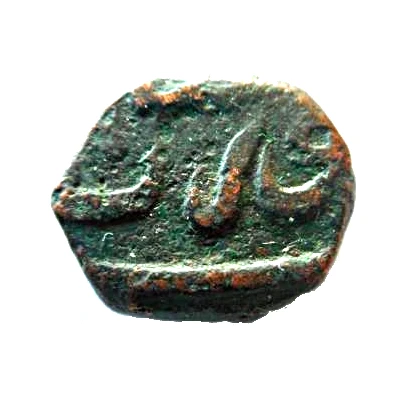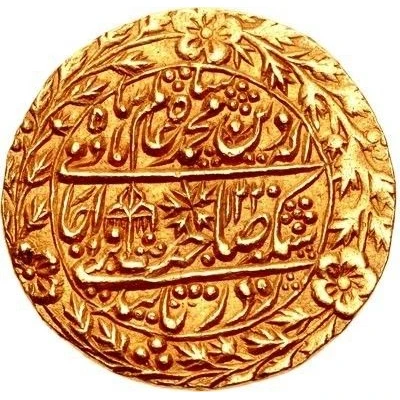
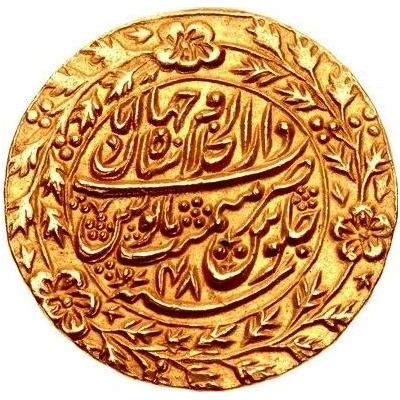

© Classical Numismatic Group, Inc.
1 Mohur - Shah Alam II Shahjahanabad
1220 (1806) year| Gold | 10.74 g | 26 mm |
| Issuer | Mughal Empire (India) |
|---|---|
| Emperor | Shah Alam II (1760-1788; 1788-1806) |
| Type | Standard circulation coin |
| Year | 1220 (1806) |
| Calendar | Islamic (Hijri) |
| Value | 1 Mohur (15) |
| Currency | Rupee (1540-1842) |
| Composition | Gold |
| Weight | 10.74 g |
| Diameter | 26 mm |
| Shape | Round |
| Orientation | Medal alignment ↑↑ |
| Demonetized | Yes |
| Updated | 2024-10-05 |
| Numista | N#315570 |
|---|---|
| Rarity index | 97% |
Reverse
Within wreath composed of roses, thistles, and shamrocks
Lettering: zarb dār āl-khālifat Shahjahānābād sanat 48 jaluūs maimanat manus
Translation: struck dār āl-khālifat Shahjahānābād year 48 of reign associated with prosperity
Interesting fact
One interesting fact about the 1 Mohur coin from the Mughal Empire is that it features a unique blend of Islamic and Hindu architectural styles on its reverse side. The coin's design includes a depiction of the Taj Mahal, which was built during the reign of Shah Jahan, the Mughal emperor who ruled from 1628 to 1658. The Taj Mahal is considered one of the greatest examples of Mughal architecture and is known for its intricate marble inlays and symmetrical design. The inclusion of this iconic landmark on the coin highlights the cultural and artistic achievements of the Mughal Empire during this period.
